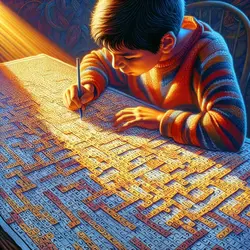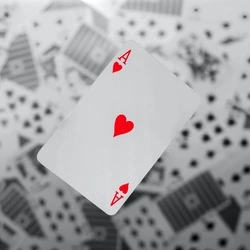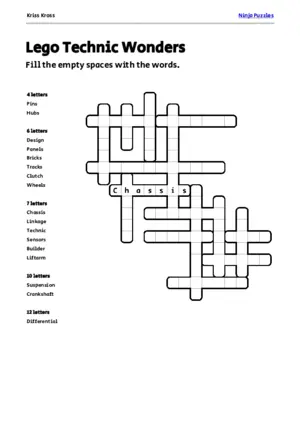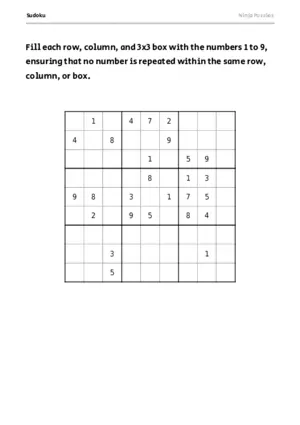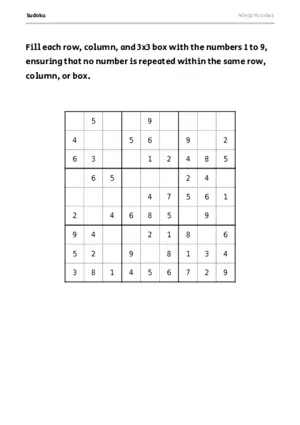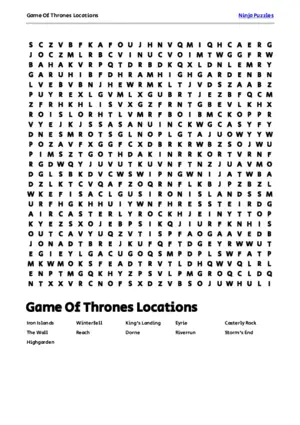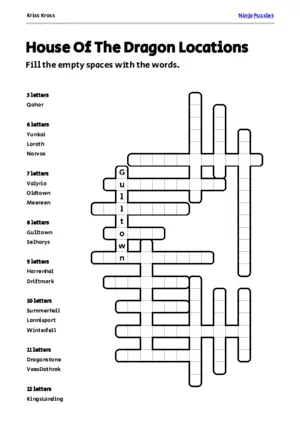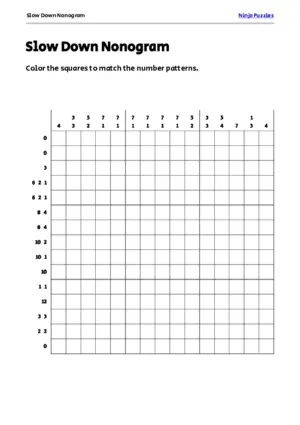Sudoku Saga: Exploring Its Past, Present, and Puzzling Variations
About the author • Ben Gillbanks spent 11 years working at Miniclip.com as a game and web developer. He spent a lot of that time working on and thinking about games and puzzles. He now makes apps, and puzzles, and apps that make puzzles. More info →
Sudoku, a puzzle phenomenon spanning centuries, continues to captivate minds worldwide. Explore its origins, evolution, and enduring appeal.
- Sudoku’s Origins: From Euler’s mathematical groundwork to Howard Garns’ modern iteration, learn how Sudoku emerged as a standalone puzzle game.
- Inspiration Begets Inspiration: Discover how Sudoku inspired a plethora of other puzzles, each with its own unique twist on number placement.
- Sudoku in Pop Culture: From movies to TV shows, Sudoku’s presence in popular media reflects its widespread recognition and enduring popularity.
- Beyond the 9x9 Grid: Explore the world of Sudoku variants, including Samurai Sudoku and Killer Sudoku, offering fresh challenges for puzzle enthusiasts.
- The Enduring Appeal: Unravel the secrets behind Sudoku’s lasting popularity, from its perfect balance of simplicity and complexity to the sense of accomplishment it offers with each solved grid.
Why is Sudoku so popular?
Sudoku’s global popularity stems from its perfect blend of simplicity and challenge. With straightforward rules and endless possibilities, it offers a satisfying mental workout and a relaxing escape from daily routines.
Sudoku. The mere mention of this popular puzzle game brings to mind grids filled with numbers and the challenge of finding their rightful places. From newspapers to mobile apps, Sudoku has captured the hearts and minds of puzzle enthusiasts around the world. Let’s dive into its fascinating history, explore its evolution, and unravel its enduring appeal.

A Sudoku Puzzle being played
The Origins of Sudoku
Believe it or not, Sudoku has a rich history that dates back centuries. The first known version of this puzzle can be traced back to the brilliant mind of Leonhard Euler in the 18th century. Although Euler did not specifically create Sudoku as we know it today, his mathematical work on Latin Squares laid the foundation for its development.
While Euler’s contribution was significant, it wasn’t until the late 20th century that Sudoku truly began to gain traction as a standalone puzzle game. In the early 1970s, Howard Garns, an American architect and puzzle enthusiast, introduced a modern version of Sudoku in a magazine called “Dell Pencil Puzzles and Word Games”. This game was called “Number Place”, and marked the birth of the puzzle we know today.
In the 1984 the game was introduced to Japan by Nikoli, a Japanese publisher that specializes in puzzle magazines. They renamed it “Sudoku”, which is short for “Sūji wa dokushin ni kagiru” – which means, “the digits are limited to one occurrence”.
Sudoku was later popularized in the United States by Wayne Gould, a retired Hong Kong judge who discovered the game while traveling in Japan. He spent six years developing a computer program that could generate Sudoku puzzles of varying difficulty levels. In 2004, Gould’s program was published in The Times of London. This marked the beginning of Sudoku’s rise to global fame.
Since then, Sudoku has undergone various transformations and adaptations across different platforms. It quickly spread from magazines to newspapers worldwide due to its universal appeal. With advancements in technology came digital versions that allowed players to solve puzzles on computers and eventually on smartphones.
Inspiration Begets Inspiration
The concept behind Sudoku’s creation was simplicity itself – place numbers from 1 to 9 in each row, column, and box without repetition. This elegance inspired countless other puzzles that adopted similar rules but offered unique twists.
One such example is Kakuro (also known as Cross Sums), which blends number placement with crosswords for an extra challenge. Another puzzle, Hidato, tasks players with connecting numbers on a grid to form a path. These puzzles owe their existence to the ingenuity of Sudoku.
Sudoku in Pop Culture
Sudoku’s influence extends beyond the realm of puzzle enthusiasts. It has made various appearances in movies and tv shows.
- 2 Fast 2 Furious (2003): Ludacris’ character is seen solving a Sudoku puzzle in a scene.
- The Proposal (2009): There’s a humorous scene where Sandra Bullock’s character is doing a Sudoku puzzle.
- The Simpsons (TV Series): Sudokus make appearances in multiple episodes, reflecting the widespread popularity of the puzzle.
- The Imitation Game (2014): Alan Turing, played by Benedict Cumberbatch, is seen solving a Sudoku-like puzzle on a chalkboard.
- Sherlock (TV Series): In the episode titled “The Hounds of Baskerville,” Sherlock Holmes is briefly shown solving a Sudoku puzzle.
Its role in modern entertainment reflects its widespread recognition and enduring popularity among people from all walks of life. After all, who can resist getting caught up in the excitement of solving a challenging puzzle?
Beyond the 9x9 Grid
As Sudoku gained worldwide acclaim, creative minds began experimenting with new variations and rule changes to keep players engaged. These variations introduce fresh challenges that test different problem-solving skills while retaining the core principles that make Sudoku so addictive.
One example is Samurai Sudoku, which features five overlapping grids that must be solved simultaneously. Another variant called Killer Sudoku adds mathematical operations and cages within the grid, requiring strategic thinking alongside number placement.
The possibilities are endless when it comes to Sudoku’s adaptations – each one offering its own unique twist on this beloved puzzle game.
The Enduring Appeal: A Puzzle That Captures Hearts
What makes Sudoku so enduringly popular? Its allure lies in the perfect balance between simplicity and complexity. The rules are straightforward enough for anyone to grasp, but solving increasingly difficult puzzles requires patience, logic, and deduction.
Moreover, Sudoku offers a sense of accomplishment with every completed grid – a satisfying moment where order emerges from chaos. It exercises our minds while providing relaxation and escapism from daily routines.
So why not embark on your own Sudoku adventure? Challenge yourself with a newspaper puzzle or download an app for instant brain-teasing on the go. You might just discover why Sudoku has become a global phenomenon.
In conclusion, Sudoku’s journey from a mathematical curiosity to a worldwide sensation is nothing short of remarkable. Its origins, evolution, and influence on other puzzles have left an indelible mark in the world of games and entertainment. The next time you’re in need of mental stimulation or simply crave some puzzling fun, dive into the irresistible realm of Sudoku - where numbers reign supreme and solving grids becomes an addictive pursuit.



